|

A JOURNEY THROUGH ARGENTINA

Dear Travel Partner,
are you ready to explore Argentina in all its diverse glory? Argentina is the land of Tango, asado, gauchos and mate tea. It is also a land of contrasts with tropical rainforests in the north, polar regions in the south and the Andean Mountains stretching along the Chilean border in the west. It has something to offer for everybody and is an ideal destination for a variety of themed holidays, including outdoor adventures, culinary explorations, cultural experiences or luxury indulgences.
We have prepared an introduction into Argentina's different regions for you, along with great recommendations for future travels. There is also an easy and delicious recipe waiting for you to bring Argentina to your home!
Enjoy and all the best,
your SAT Team
|
|
*** Temporary office hours (Monday-Friday) ***
|
| SAT Argentina: |
09:00h - 14:30h |
| SAT Brazil: |
09:00h - 13:00h |
| SAT Chile: |
09:00h - 15:30h |
| SAT Colombia: |
09:30h - 17:30h |
|
|
|
|
| SAT Ecuador: |
09:30h - 17:30h |
| SAT Peru: |
08:00h - 14:00h |
| SAT Uruguay: |
09:30h - 13:30h |
|
|
EMPANADAS - AN ARGENTINEAN STAPLE
|
 |
|
Empanadas are the perfect snack and something you just can't miss out on when travelling to Argentina. Lucky for us, these yummy filled pastries are easy to cook at home as well!
Once you have the dough ready, there is a myriad of fillings to choose from but we want to focus on the classic empanada mendocina with ground beef.
Dough (for 20 medium empanadas)*
- 360g flour
- 1/2 tsp salt
- 115g butter (you can also use lard)
- 1 egg yolk
- 180-240ml warm milk
*Pro tip: prepare a larger amount of empanada discs and store in the freezer for quick use!
Mix the flour and salt, then add the butter and egg yolk and combine well.
Add the milk little by little until clumps form. Mold the dough into a ball and refrigerate for 30 minutes.
Thinly roll out the dough on a floured surface and cut out uniform discs, e.g. with the help of a small plate.
Filling
- 900g ground beef
- 2 tbsp paprika powder
- 2 tsp chili powder
- ½ tbsp ground cumin
- 115g butter (you can also use lard)
- 2 onions, diced
- 1 bunch green onions, chopped
- 1 tbsp oregano, chopped
- 3 hard-boiled eggs, sliced
- 60g green olives, halved or sliced
- salt and pepper to taste
- 1 egg, white and yolk separated
Mix the beef, paprika, chili and cumin in a bowl and season with salt and pepper to taste.
In a large pan, melt the butter and cook the onions until soft, then season with a pinch of salt. Add the beef and cook on medium heat until done while stirring frequently.
After the beef has cooled down, mix in the green onions and oregano.
Add a spoonful of filling onto your empanada discs with a slice of egg and half an olive (or a few slices).
Brush the edge of the dough discs with egg white to help seal the empanada, then fold in half and gently pinch the edge with a fork to seal it.
Refrigerate the empanadas for 30 minutes while pre-heating your oven to 200°C. Place the empanadas on a baking sheet and brush the top with egg yolk, then bake for approx. 20 minutes until golden-brown on top.
Enjoy your empanadas while hot and for an extra kick, add some chimichurri sauce!
|
 |
|
 |
|
BUENOS AIRES: THE MELTING POT OF ARGENTINA
|
 |
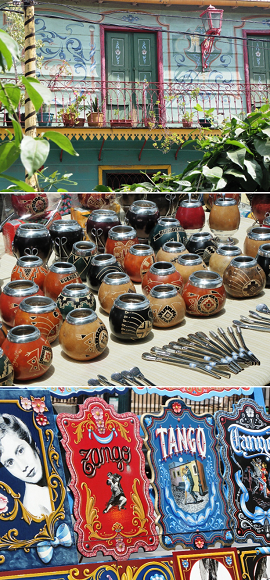 |
|
Buenos Aires is not only Argentina's capital but also its political, economic, and intellectual center. Located on the western shore of the “Río de la Plata”, the cosmopolitan city is filled with modern constructions while preserving old traditions, fascinating art and antiques, colonial architecture, and many charming corners. The city dazzles its visitors with museums, parks and shopping opportunities as well as a buzzing nightlife, all of which has earned Buenos Aires the nickname "Paris of South America". The city never sleeps
and we promise that no matter how much time you spend here, you will never get bored!
The must-sees include impressive buildings such as the National Congress, the Metropolitan Cathedral and the executive mansion Casa Rosada as well as
famous landmarks such as the Recoleta cemetery and the colorful pedestrian zone El Caminito. There are
countless markets and fairs for souvenir shopping, two of the best-known being the San Telmo Antique Fair and the Palermo Design Fair. Want to inject a bit of culture into your stay? Visit one of the numerous museums like the Museum of Latin American Art (MALBA), the Evita Museum, the underground tunnels of El Zanjón de Granados or the football museum of the renowned club Boca Juniors.
When you need a break from exploring, Buenos Aires'
traditional coffee houses like the emblematic Café Tortoni or the iconic La Biela offer delicious pick-me-ups. If you are looking for a more hearty meal, you will be spoilt for choice since Buenos Aires is famous for its
culinary scene. Markets like Mercado del Progreso or Mercado de San Telmo offer some of the best street food while pizzerias like El Cuartito or Guerrin serve the Argentinean version of cheesy goodness. And of course you have your choice of steak houses, including Fogón Asado, Don Julio or El Trapiche.
|
 |
|
 |
|
SAT TIP: COUNTRY LIFE IN THE PAMPA
|
 |
Just a short drive outside of Buenos Aires, the scenery changes to the wide plains of the Argentinean pampa. The home of gauchos and traditional estancias is the perfect contrast to the busy city life and a great get-away for just a day or overnight. Here are two of our favorites located in the historical town San Antonio de Areco, also known as the "Cradle of Tradition":
El Ombú de Areco is a 300-hectare working estancia dedicated to livestock (Aberdeen Angus cattle and horses) as well as agriculture (e.g. soy, corn, and wheat). The late-colonial style mansion also houses 12 spacious and beautifully designed rooms. Guests can explore the grounds on foot, bike or horseback; carriages are also available. Hobby ornithologists are provided with binoculars and guide books. You can get active with ping-pong, volleyball and football or relax at the swimming pool. The estancia also organizes shows with live music and folk dances as well as equestrian
demonstrations.
La Bamba de Areco is one of the oldest estancias in the area and a member of Relais & Chateaux. Its 11 rooms and suites are decorated in a tasteful mix of country charm and luxury design. As the base for an international polo team, guests can watch practice sessions and matches on the two polo fields. Other activities include hiking, biking, fishing or horseback riding.
Contact us for more information about tours in the Argentinean countryside! |
 |
|
 |
|
THE GREAT WATERS OF THE NORTHEAST
|
 |
|
In the northeast of Argentina is a region of rivers, red earth and marshland, magnificent jungles and extraordinary flora and fauna. It is an area of exuberant beauty, which extends through the Iguazú National Park, the Falls of Mocona, the Pilcomayo National Park, El Palmar de Colon National Park, the Iberá Marshlands and the Chaqueñas Plains. Amongst all this glorious nature you can find the ruins of former Jesuit missions which have been declared a Natural Heritage for Humanity by UNESCO.
The most famous sight of this region are the unceasingly roaring
Iguazú Falls, meaning Great Waters in the Guarani language. This natural spectacle along the Argentinean-Brazilian border leaves every visitor speechless. Imagine standing a few meters (that’s right, a few meters) away from a volume of water dropping over 70m (230ft) at a rate of millions of cubic litres per second! In total, there are 275 falls that stretch along 2,7km (1,7mi). The Iguazú National Parks of Argentina and Brazil are full of exotic subtropical vegetation and wildlife, including 2000 plant species, 400 bird species, coatis, jaguars and
caimans. Besides the waterfalls, you can also
visit local Guarani communities or an old mine of semi-precious stones.
A few hours from Iguazu, you can find one of the biggest wildlife wetlands in the world: the
Iberá lagoons and marshes. On an area of 13,000km², this unique ecosystem shelters a vast variety of fauna and flora. The wetlands are composed mainly of marshes, lagoons, and pluvial streams. The marshes are water deposits that are 1-3 metres deep covered with aquatic plants; they may also be floating formations that hide the surface with large communities of floating plants. The area is home to hundreds of species of birds, caimans, capybaras, marsh deer, otters, wild cats, howling monkeys, anacondas, piranhas and many other animals.
|
|
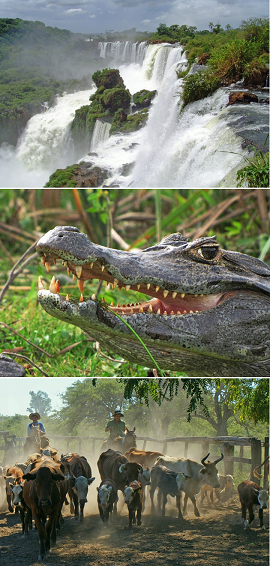 |
 |
|
 |
|
SAT TIP: HOTEL PUERTO VALLE IN THE IBERÁ WETLANDS
|
 |
|
Hotel Puerto Valle is an amazing property located on the shores of the
Paraná River. It features 5 rooms in the main house and 8 separate deluxe rooms with private terrace. All rooms have a cozy and comfortable design and offer a great view of the river. The traditional meals include fresh produce from the hotel's organic garden as well as regional ingredients. Besides more than
14 hectares of park, the hotel also features a cozy library with TV, an outdoor pool and an event room. Massages and yoga sessions are available on request.
The all-inclusive package includes a variety of activities to explore the surroundings and observe the huge diversity of animals. You can embark on
sailing and kayaking tours on the Paraná Rivers from the hotel's private pier or go on an
expedition to Laguna Valle with lots of opportunities to observe caimans, capybaras, marsh deer and birds. Avid photographers can go on a
photo safari to Cambyretá Portal, the northern entryway to the Iberá National Park. There are also
horseback riding tours as well as
visits to the tree nursery and the organic garden.
For details on the packages and rates of Hotel Puerto Valle, please contact us! |
 |
|
 |
|
THE NORTHWEST: ANDEAN TRADITIONS AND STUNNING LANDSCAPES
|
 |
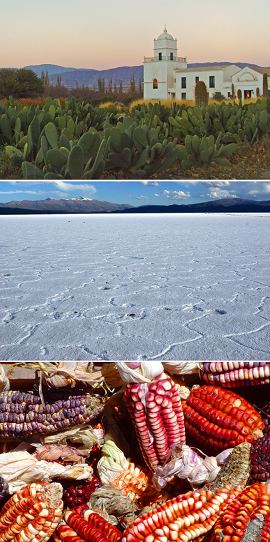 |
|
Argentina's Northwest is a region of great diversity with abrupt changes of climate and scenery. There are lunar landscapes, deciduous forests, impenetrable jungles, indigenous ruin sites, adobe villages, bubbling streams and rivers, giant cacti, deep gorges and salt flats. Under clear blue sky, small villages let the seasons pass quietly being only interrupted by the carnivals, Indian markets and the worship of "Pachamama" or Mother Earth who provides maize and the pastures where the llamas and guanacos graze.
The gateway to the Northwest is Salta, located in a very fertile valley at an altitude of 1,152m (3,780ft). The city got its name from the Aymara word "sagta" meaning "very beautiful". Founded in 1582, the city's unique flair is dominated by cobblestone streets, colonial architecture, authentic restaurants, and a lively cultural scene.
Leaving Salta towards the north takes you to the Quebrada de Humahuaca, a 155km (96mi.) long mountain valley that frames the villages Purmamarca, Maimara and Tilcara. Its most stunning feature are the multi-colored hills and otherworldly rock formations. And did you know that Argentina has its very own salt desert? The wide white plains of the Salinas Grandes cover an area of 212km2 (82mi2) and can be visited during a full-day tour from Salta.
South of Salta, you find one of spectacular wine regions that Argentina in famous for. Cafayate is an idyllic small town, located between Andean foothills and surrounded by vineyards. The city even has a wine museum to learn more about the unique local wine which is influenced by the low-humidity, high-altitude climate.
|
 |
|
 |
|
SAT TIP: SELF-DRIVE ADVENTURE BETWEEN VINEYARDS AND CANYONS
|
 |
After picking up your rental car at Salta airport, you head outside the city where the cosy
Finca Valentina is waiting. The beautiful finca offers five rooms decorated in a rustic-natural style and is well-known for its high quality service. During your stay, you have your choice of various activities including horseback riding, mountainbiking or cooking classes. From here, you drive north towards Purmamarca, a small village with colonial structure and adobe architecture located on the edge of the Puna plateau. Here, you can marvel at the spectacular mountain range
Cerro de los Siete Colores ("Mountain of Seven Colors"). The small hotel
La Comarca perfectly fits the setting with its spacious rooms that are uniquely decorated with handicrafts and paintings of local artists. It is also a great base for excursions to the salt lakes Salinas Grandes and the Humahuaca Gorge. The canyon with its breathtaking colorful stone layers was actually declared a UNESCO World Heritage Site by the UNESO thanks to the customs and traditions of the local people. After a stopover in Salta, you drive south through the
National Park Los Cardones with its formations of large cacti towards your next destination:
Cachi. This picturesque town is located between majestic mountains in the Valles Calchaquíes. It is also home to the lovely boutique
Hotel & Spa Merced del Alto. Is there anything better than a relaxing massage and a stunning view from an outdoor jacuzzi and swimming pool? The
Quebrada de las Flechas with its bizarrely shaped rock formation takes you to
Cafayate, the heart of the viticulture in north-western Argentina. The wine resort
Viñas de Cafayate promises you an amazing stay between vineyards, granite hills and the Cafayate Gorge. The hotel's organic garden provides fresh produce and you can look forward to tasting local wines and cheeses. Why not book an outdoor yoga class while you're there? Finally, you make your way back to Salta. A visit of the Quebrada de las Conchas ("Gorge of Shells“) is highly recommended since its extraordinary rock formations and multi-colored mountains have earned it the nomination as a UNESCO World Heritage Site. In the city, you have your
choice of beautiful hotels while you explore Salta in depth.
Click here for more travel ideas in Argentina's Northwest! |
 |
|
 |
|
MENDOZA - THE JEWEL OF WINE CULTURE
|
 |
|
Mendoza is an atmospheric, laid back city surrounded by rivers, valleys, canyons, and the imposing Andean mountain range. The radiant sun and moderate temperatures throughout the year make the region not only ideal for winegrowing and olive oil production but also for outdoor activities.
As a city founded by the Spanish four centuries ago, Mendoza has a rich history that is displayed in several museums, like the Foundation Area Museum which displays archeological remains of important buildings. A lot of Mendoza's original architecture was destroyed by a severe earthquake in 1861 and some ruin sites have been preserved or were used as foundations for the city's rebuilding. From the "Hill of Glory" you can appreciate a fantastic panoramic view of Mendoza as well as learn about the heroes of Argentina's fight for independence.
Internationally renowned as a wine region, wine-related activities are a must when visiting the city. From wine museums to countless tasting options and visits to vineyards, there is something for everybody. Good wine is often accompanied by good food so it is no wonder that Mendoza has lots to offer when it comes to restaurants and cafés as well.
There is nothing better to burn off the unavoidable calories than outdoor activities in the mountains surrounding Mendoza. The Aconcagua, the highest mountain in the Americas is a favorite destination of mountaineers from all over the world and hikers, bikers as well as riders will enjoy the solitude, beauty and diverse landscape that this region has to offer. For the more adventurous, there is even the possibility to go rafting or paragliding!
|
|
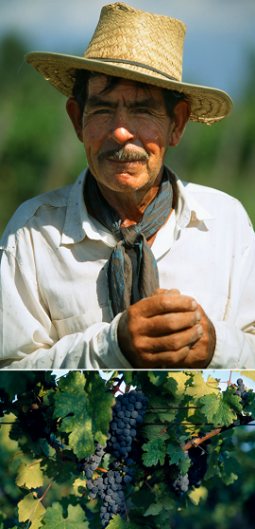 |
 |
|
 |
|
SAT TIP: NATIVE COMMUNITIES AND BREATHTAKING NATURE
|
 |
Exploring the native roots of Mendoza and its surroundings is a fascinating endeavor. The
Huarpe are the indigenous people of the area and the village
La Asunción welcomes visitors to educate them about their history, culture and modern lives. In Mendoza there are currently eleven Huarpe communities which respect their ancient traditions and social structure. Upon arrival, one of the local families will prepare a delicious meal with homemade empanadas, bread and goat made in the outside oven. Afterwards, there is the opportunity to chat with the people or participate in a small workshop of loom and leather crafts to learn the different techniques.
On the way to the village, you will make a stop at the dunes of Altos Limpios, which makes you feel like you have been transported into the desert. A walk through the Natural Reserve will allow you to immerse yourself into the beautiful native landscape of the area.
There are many more outdoor adventures in Mendoza, learn about them here! |
 |
|
 |
|
BARILOCHE, ARGENTINA'S ALPINE PARADISE
|
 |
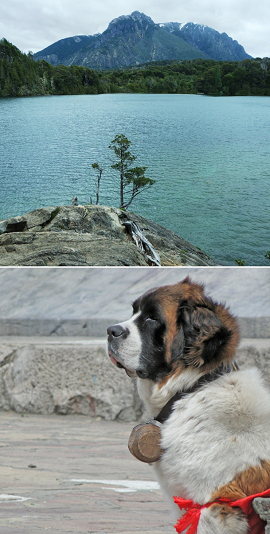 |
|
Located in the Andean foothills,
Bariloche is often compared to the Swiss Alps not only because of its picturesque beauty and wooden chalets but also because Bariloche is renowned for its chocolate production. During the low season, it is the ideal place for those looking for quiet serenity in the midst of nature. Bariloche is right in the heart of the
Argentinean Lake Region and is located on the southern shore of
Lake Nahuel Huapi. The city's surrounding lakes and mountains are perfect for all kinds of outdoor activities such as hiking, mountainbiking, kayaking, fishing, and rafting.
Bariloche is the gateway to venture into the Nahuel Huapi National Park. It contains the most diverse and spectacular natural phenomena of the Lake District: lakes, rivers, glaciers, waterfalls, torrents, rapids, valleys, and forest, bare mountains and snow-clad peaks. Many kinds of wild animals and birds live in the region. Towering over the scenic national park along the Chilean-Argentinean border is
Cerro Tronador with an altitude of 3,470metres (11,380 ft). Lake Nahuel Huapi is the biggest lake in the park: it's approx. 96km (60 mi) long, and not more than 12km (7,5 mi) wide. Its irregular shape and long arms of water stretch far into the land and are reminiscent of the Norwegian fjords. There are many islands that belong to the park. The largest is
Isla Victoria, on which stands the forest research station where new species of vegetation are acclimatized.
Bariloche is also one of the starting points for crossing over to Chile. The full-day Andean Crossing Experience includes several bus and boat rides from Puerto Panuelo to Puerto Varas in Chile, stopping in towns such as Puerto Blest, Peulla and Petrohué.
|
 |
|
 |
|
SAT TIP: GET ACTIVE IN BARILOCHE
|
 |
There are several
mountainbike experiences for all levels of bikers and our recommendation combines scenic spots of Nahuel Huapi National Park and Bariloche history. The first part of the tour leads through single tracks along small streams, unpaved roads with moderate slopes and some short descends with beautiful views of the landscape. While cycling along the sides of the hills Bella Vista and Goye, you will have the beautiful Lake Moreno at your feet. You make a break at “Colonia Suiza”, a small settlement near the lake with old houses from the first
habitants. From there, you make your way to the “Panoramic Viewpoint”. There is no better spot to observe the extraordinary landscape of the mountains, Lake Nahuel Huapi and Victoria Island. On your way back, you will pass by the streams Lopez and Angostura as well as Lake Escondido before reaching the iconic Llao Llao Hotel where your tour finishes.
If you are interested in exploring the area on
horseback, a great full-day option is available for both experienced and unexperienced riders on the southern edge of Gutiérrez Lake in the Nahuel Huapi National Park. Your experience starts in the morning with breakfast served in front of the lake. After getting to know the horses, you make your way through the beautiful landscape of the park towards a forest of cypresses and coihues. During the whole ride along the southern slope of Cerro Catedral, you can marvel at streams, forests and the Gutiérrez Lake. After a lunch break, you ride for another two hours through
an area of pampas until you reach a view point that offers a spectacular panorama. From here, you return to the shore of the lake where your adventure ends with hot chocolate and homemade cakes.
For more outdoor excursions in the Nahuel Huapi National Park, please contact us! |
 |
|
 |
|
AMIDST GLACIARS AND MOUNTAINS IN SOUTH PATAGONIA
|
 |
The southern part of Patagonia, specifically Santa Santa Cruz and Tierra del Fuego, is a region that attracts visitors not only with beautiful landscapes but with the mysterious lure of glaciers and the remoteness of the "end of the world".
El Calafate is one of the most popular destinations in southern Patagonia. A pleasant village located on the southern shore of Lake Argentino, it is close to the Los Glaciares National Park, a UNESCO Natural Heritage Site. Its strategic location between el Chaltén and Torres del Paine in Chile makes it a great stop for Patagonian explorers and travelers. The town boasts many hotels, restaurants, cafés, and chocolate shops as well as a museum dedicated entirely to glaciers and ice. A must-see is the breathtaking
Perito Moreno Glacier, a 5km wide and 80m high part of the Patagonian Continental Ice Field.
Located roughly 3,5h from Calafate is El Chaltén, a small town in the heart of Los Glaciares National Park. Declared the National Hiking Capital, it is a paradise for hikers and climbers who can enjoy numerous world-class trails.
Travelling south to the island of Tierra del Fuego, you reach Ushuaia, the southernmost city in the world and the gateway to Antarctica. Located by the Beagle Channel and surrounded by the snowcapped Martial Mountains, it boasts impressive national parks filled with mountains, glaciers, forests, and endemic fauna and flora. The city has a unique history of early settlers, including missionaries, gold prospectors and even prisoners. This area is surrounded by beautiful lakes, woods and mountain scenery making it perfect for activities like kayaking, hiking, canoeing,
scuba diving, skiing, snowshoeing, or dog sleighing.
The nearby Tierra del Fuego National Park is home to diverse species of flora and fauna, such as red foxes, guanacos, beavers, condors and ducks. In the Beagle Channel seals, Magellan penguins and cormorants can be spotted.
|
|
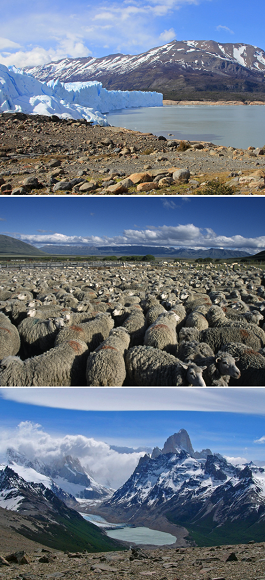 |
 |
|
 |
|
SAT TIP: REMOTE ESTANCIAS OF PATAGONIA
|
 |
Estancias in Patagonia are an entirely different breed from the ones that can be found in the pampa surrounding Buenos Aires. They exude tranquility and a rustic beauty that perfectly fits the region. They are also a great way to connect with the people who call these rough regions their home and learn about their lives.
One of these estancias is
Estancia Cristina, located in a remote corner of the Los Glaciares National Park. It was founded by a pioneering family in 1914 and has preserved its history and essence until today. The estancia can only reached by boat, navigating across the Lago Argentino and the Christina Channel. Between October and April, the estancia welcomes day visitors as well as overnight guests. The excursions include hikes to a local waterfall and a canyon full of marine fossils, a 4x4 ride into the mountains with a trek up the Upsala Glacier, and a horseback riding tour to Pearson Lake. All programs
include a visit of the estancia's museum displaying the history of the founding family.
Estancia Harberton in Tierra del Fuego was founded in 1886 by an Anglican missionary. As an important part of Ushuaia's history, a visit to the Harberton homestead is a journey back in time to learn about the history of the founders and their relationship with the natives that inhabited the lands. Besides the family cemetery, you can visit replicas of Yámana huts, the old shear shed and the carpentry. The estancia also runs the Acatushun Museum of Birds and Marine Mammals with more than 2800 specimens of mammals and 2300 specimens of birds. The estancia even owns
an island that can be visited: Martillo Island is home to more than 10,000 Magellanic penguins, approx. 100 Gentoo penguins and is occasionally visited by small groups of King penguins.
Receive more information about estancia visits in Patagonia here! |
 |
|
 |
|
WILDLIFE GALORE IN CHUBUT
|
 |
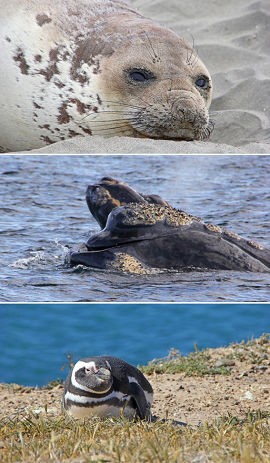 |
|
Chubut is the region of Patagonia that is most famous for wildlife observations. One of its most popular destinations is
Puerto Madryn, which was founded by Welsh settlers and is located on the “Nuevo Gulf”. Besides a beautiful tree-lined sea front, the city boasts lovely hotels, restaurants, and bars. Puerto Madryn is the gateway to the
Valdés Peninsula, an area rich in marine fauna and flora such as sea elephants, sea lions, Magellanic penguins, guanacos, whales, and thousands of birds. The peninsula is a UNESCO Natural World Heritage site located by the Atlantic Ocean with gulfs, rocky cliffs, shallow bays, sandy beaches, and small islands. When you are looking for a more quaint experience,
Puerto Pirámides is for you. The tiny village with less than 500 residents is the only inhabited town on the peninsula and the only place for boat excursion to observe Southern Right Whales during their migration cycle (May-December). Punta Loma is located 17km (11mi.) southeast from Puerto Madryn. The fauna reserve and protected area is a permanent settlement for the southern sea lion. When visiting during the low tide, one can spot cormorants, different types of sea birds, and other regional birds, amphibians, and mammals. Bahia Bustamante is a
coastal village entirely surrounded by nature. One of the wildest coastal areas in Patagonia, it is situated on the northern side of the San Jorge Gulf, between the cities Comodoro Rivadavia and Trelew. Its incredible biodiversity includes a wide amount of seabirds and marine mammals like sea lions, penguins, and more.
|
 |
|
 |
|
SAT TIP: BAHIA BUSTAMANTE LODGE
|
 |
The
Bahia Bustamante Lodge is open during the Argentinean summer between October and April. The opening and closure of the lodge coincides with the
penguin season in Chubut, one of the most wonderful experiences for visitors of the area. The lodge offers a great selection of
exploration activities in the surroundings, like boat rides to observe marine wildlife such as sea lions, Magellan penguins and sea birds. They also offer biking or trekking adventures as well as touring in 4x4 trucks. There is even the opportunity to participate in the ranch's work of sustainable wool production for a day. Sustainability plays an important role in the lodge's operation. The eco-lodge and private wildlife sanctuary has been
included in the Patagonia Austral National Park and Blue Patagonia UNESCO Biosphere Reserve. Furthermore, they use solar energy to generate electricity and heat water and use natural spring water for which reusable bottles are provided. Recently, the lodge also has planted more than 1000 trees and has a strict system of waste separation with a focus on "reduce-reuse-recycle".
Please contact us for more information about packages at Bahia Bustamante Lodge. |
 |
|
 |

|
 |
|
 |
South American Tours - Global Sales Office
South American Tours GmbH | Kaiserstr. 23 | 60311 Frankfurt am Main | Germany
Phone: +49 (0) 69 4058970 | Fax: +49 (0) 69 40589799
Mail: sales@southamericantours.com | www.southamericantours.com
South American Tours - Sales Office North America
Mail: sales-america@southamericantours.com
Copyright © South American Tours 2012-2020
Imprint
South American Tours de Uruguay Agencia de Viajes S.A. | Buenos Aires 618, Piso 2, Oficina 201 | 11000 Montevideo | Uruguay
Tel.: +59 82 91 60 050 | Fax.: +59 82 91 55 406 | E-mail: info@southamericantours.com
Managing Director: Federico Büker | Registered Office: Montevideo | Local Court: Montevideo | Commercial Register: 1194 (Ministry of Tourism) | VAT identification no.: 215224020014

|
|
Protection of data privacy and cancellation of the subscription:
This message has been sent to 10063. If you do not want to receive mails in the future you can unsubscribe by clicking
here.
|
|
|
 |
|
 |
 |
|
|